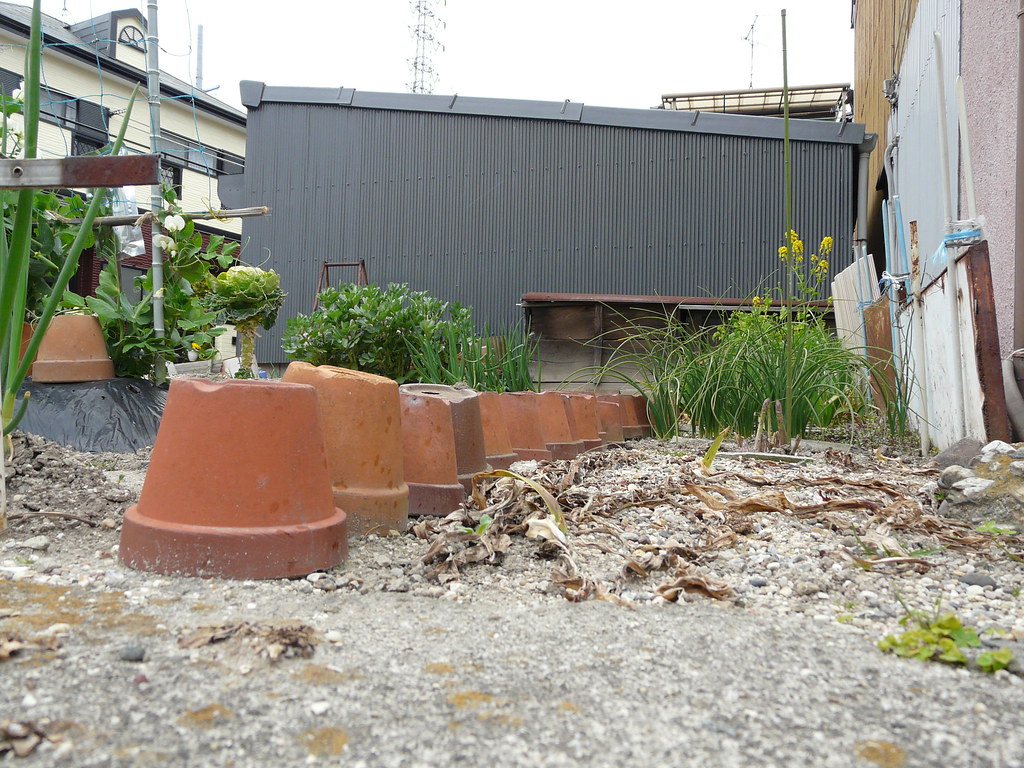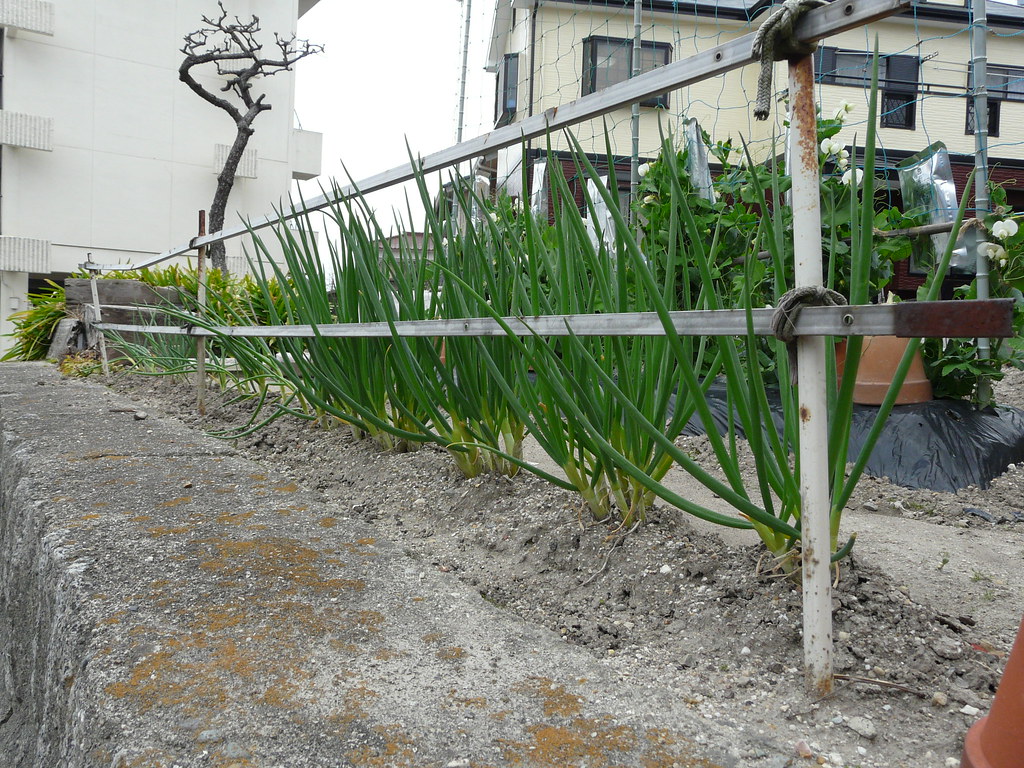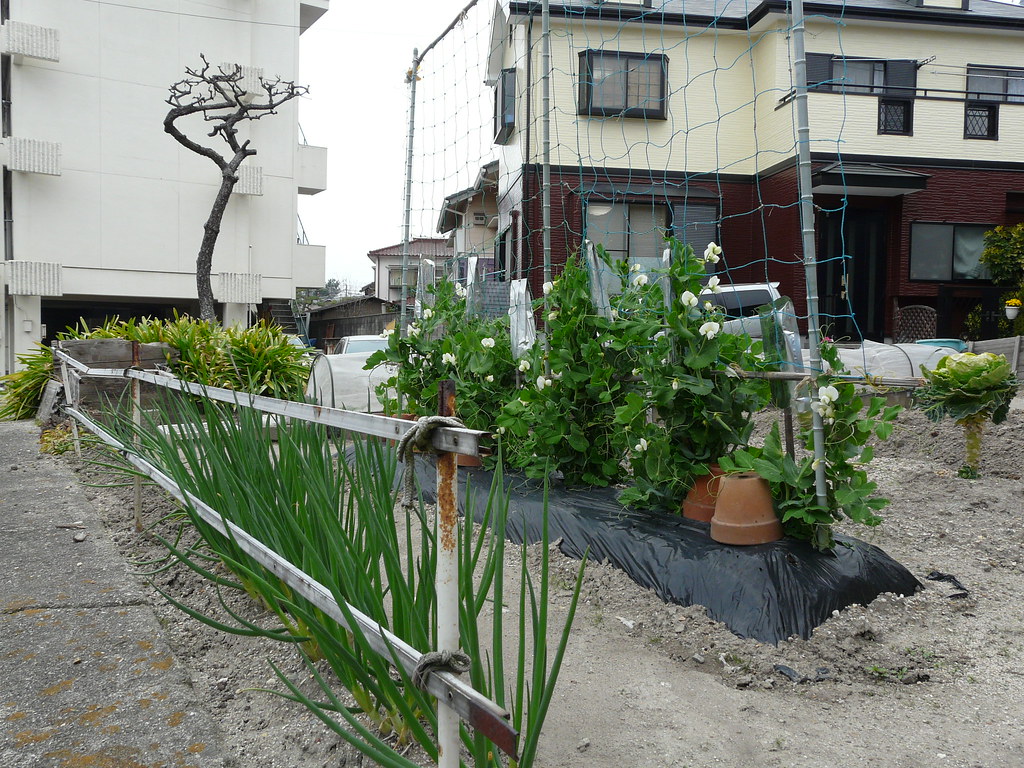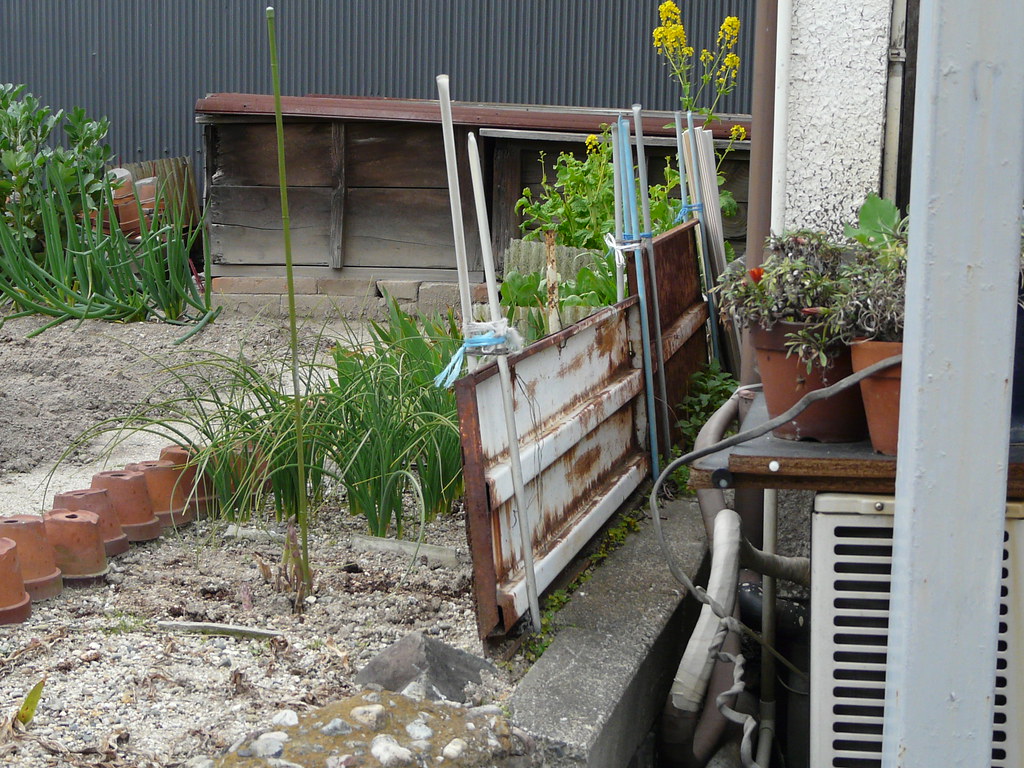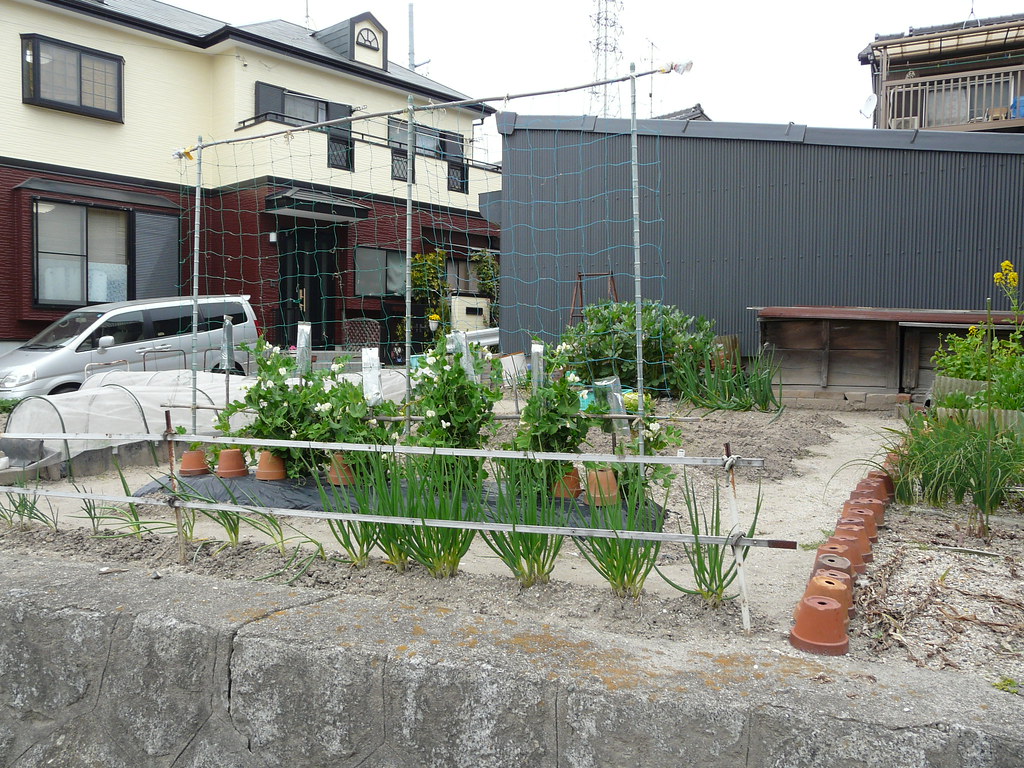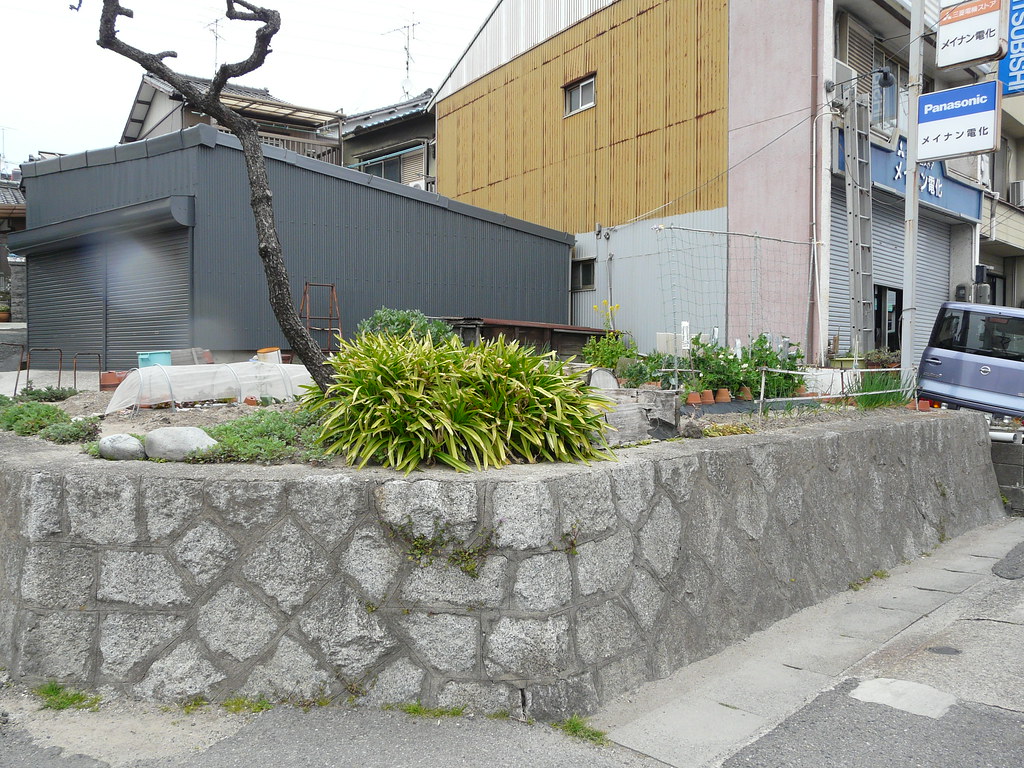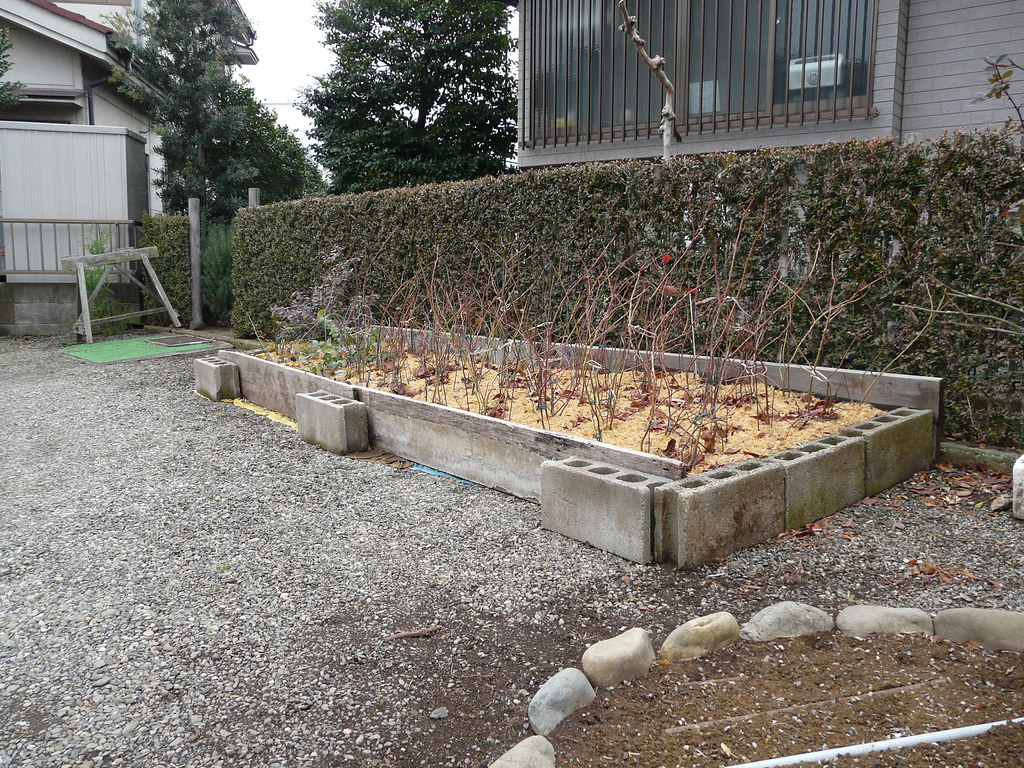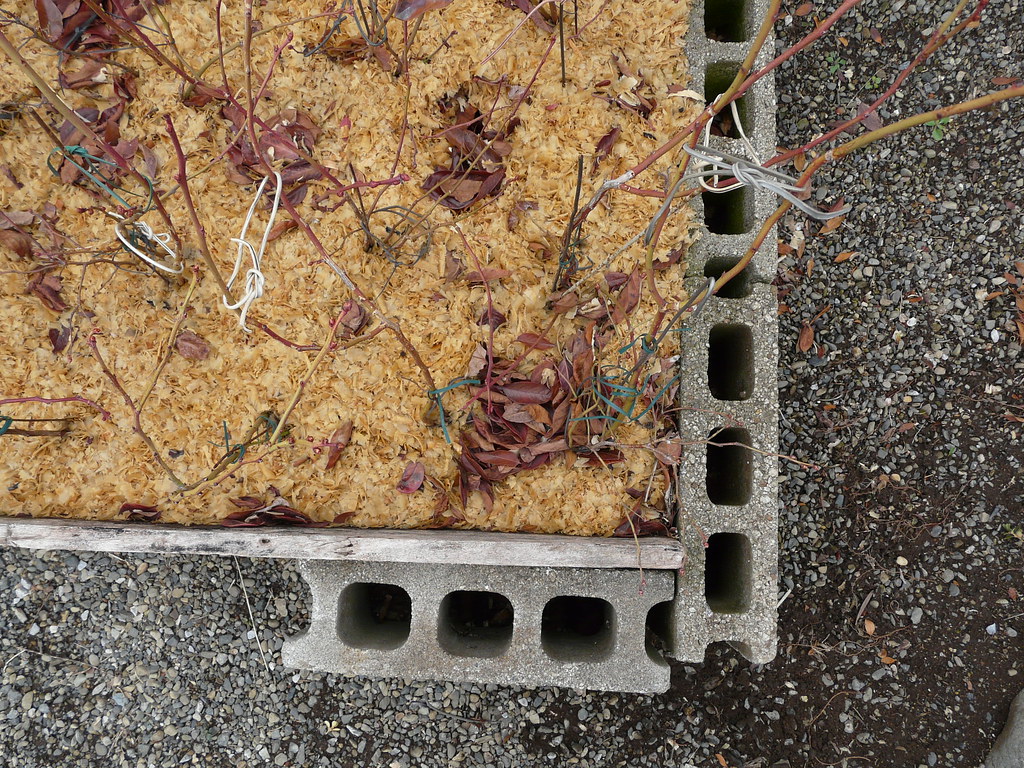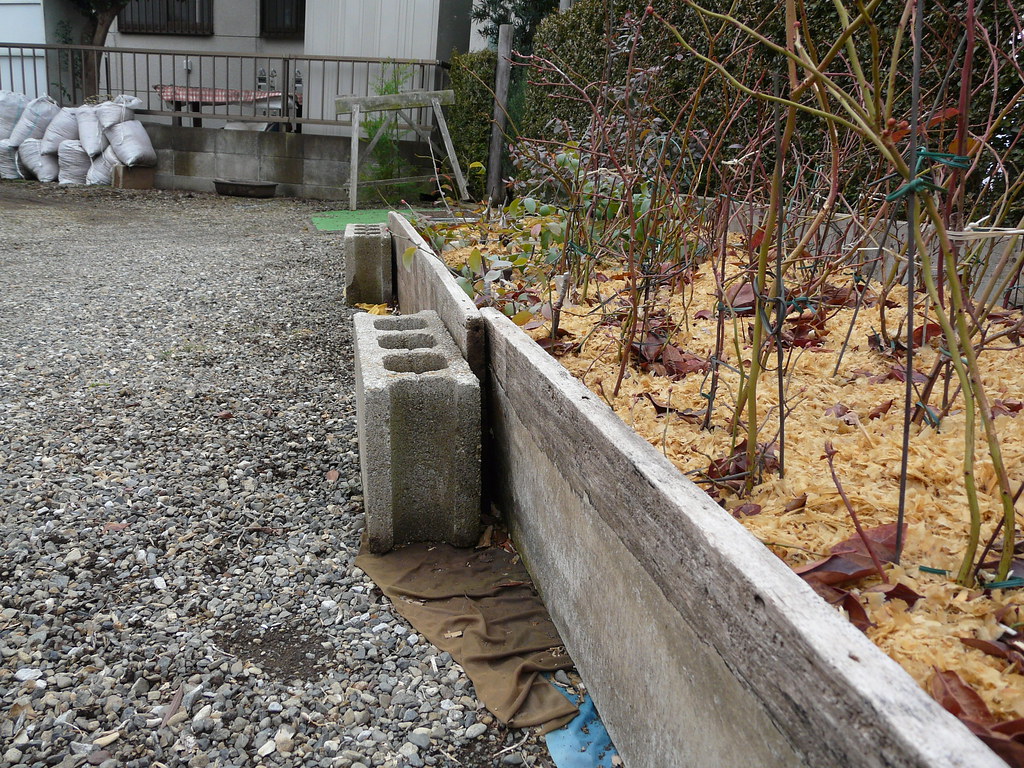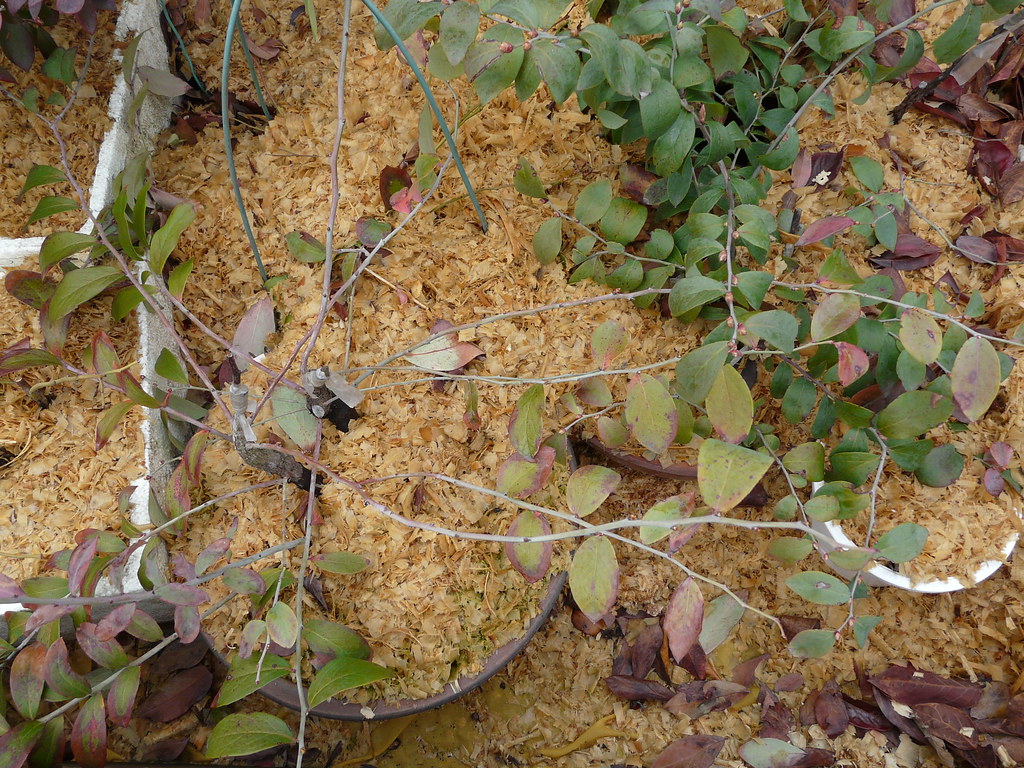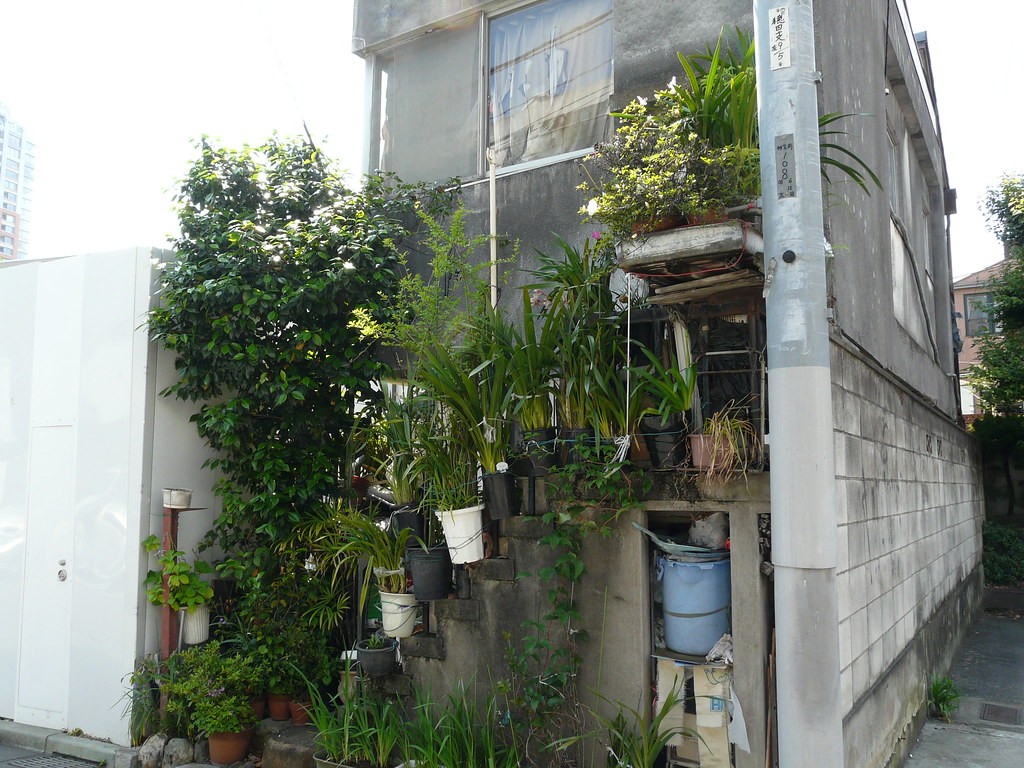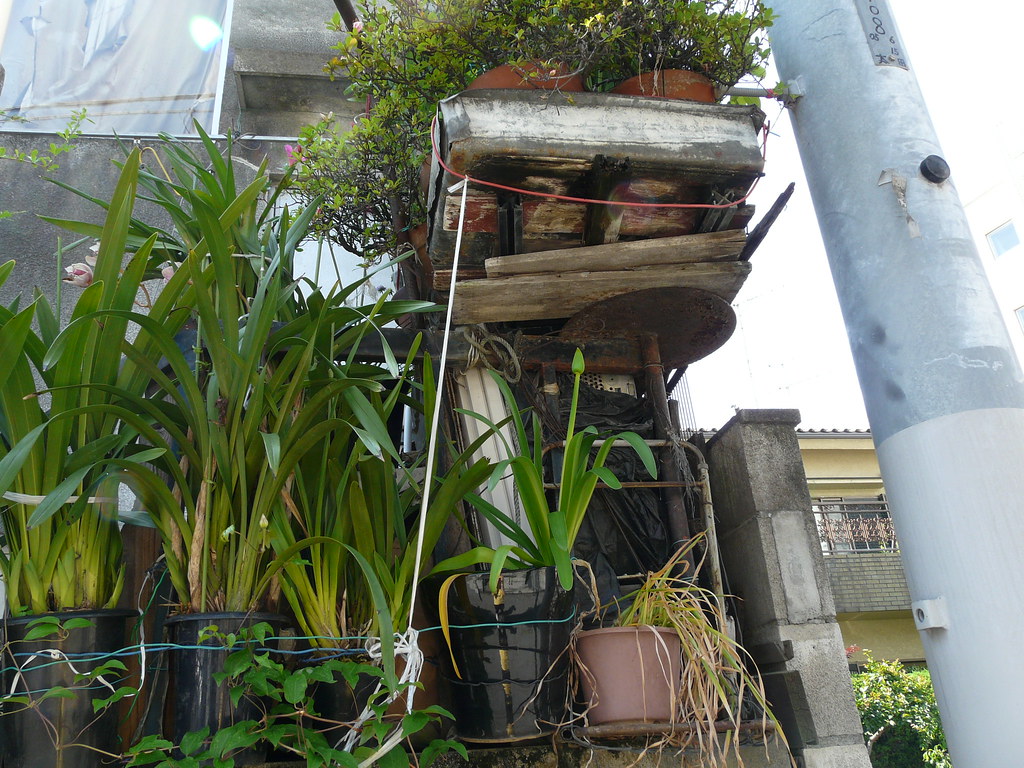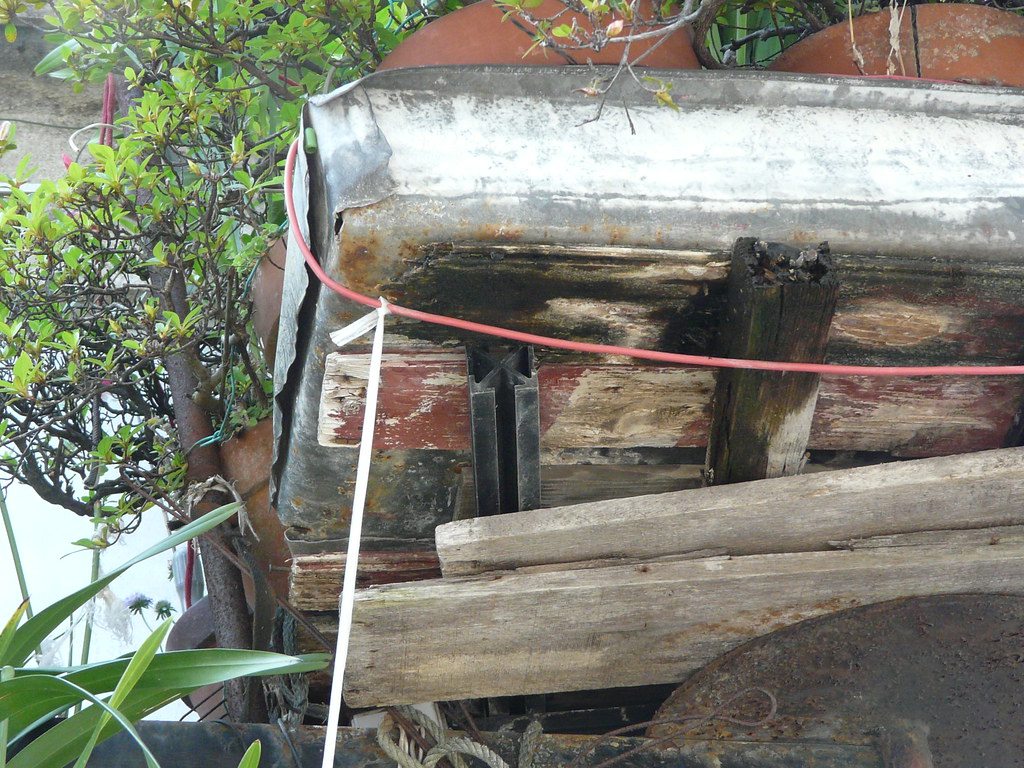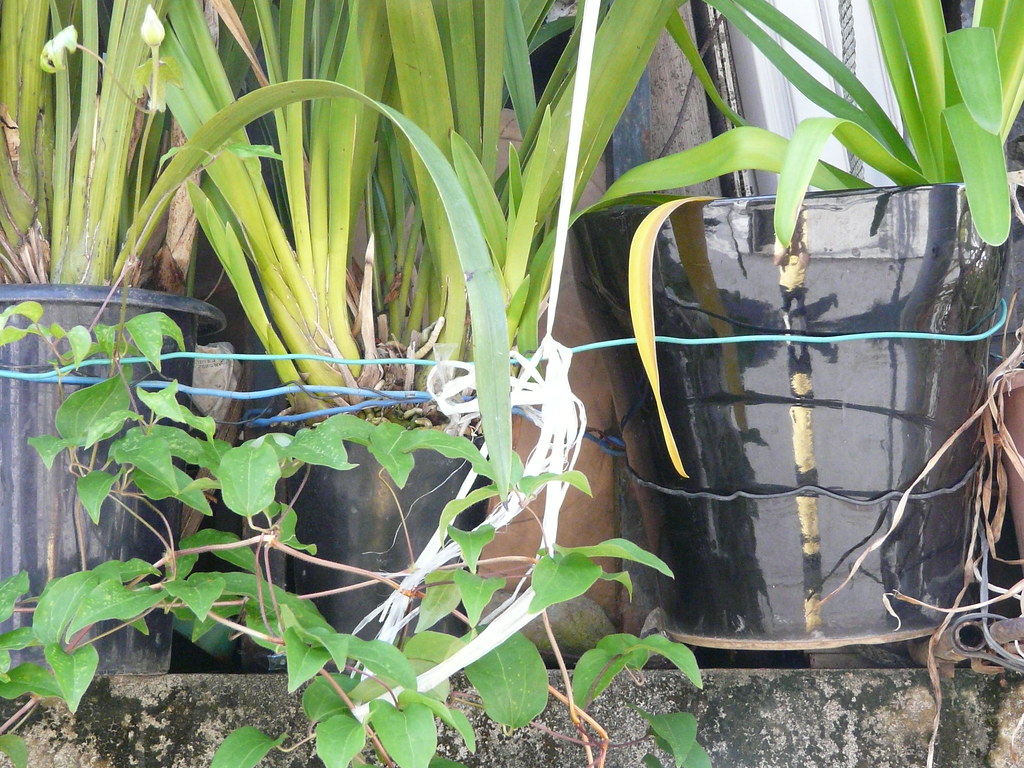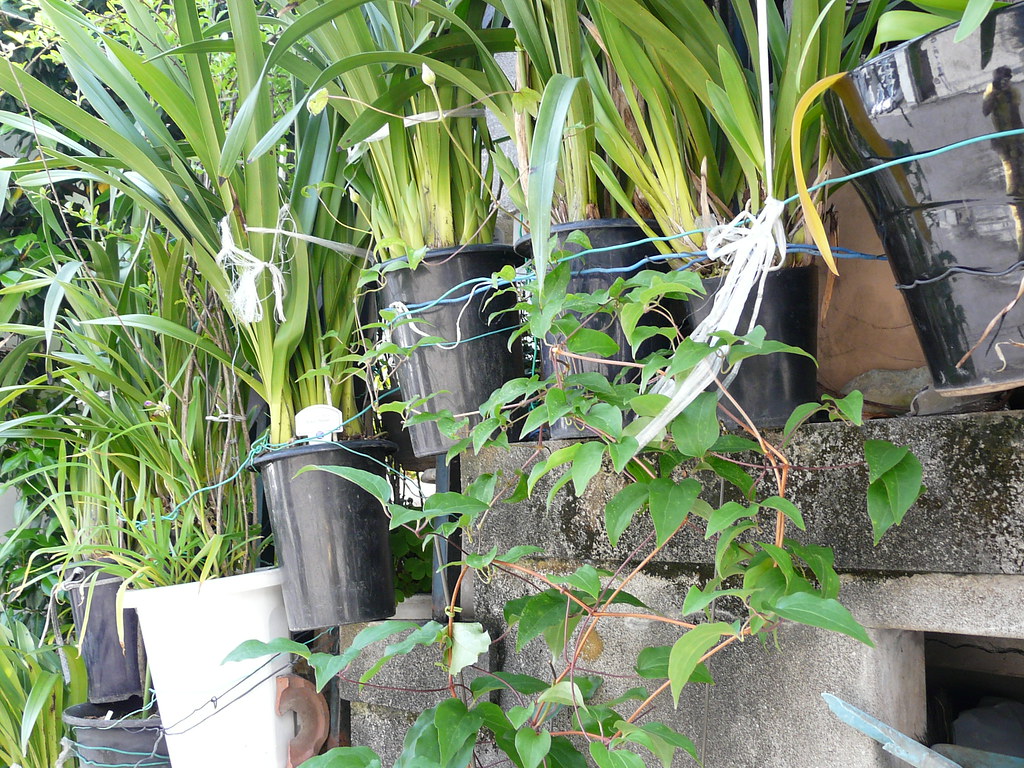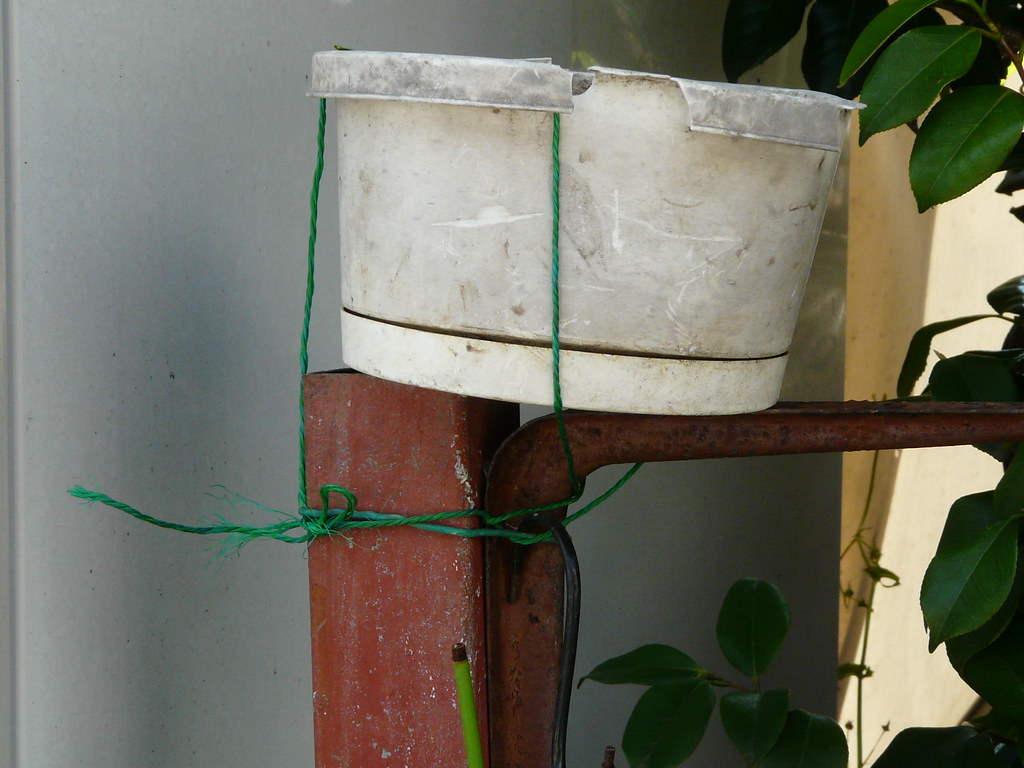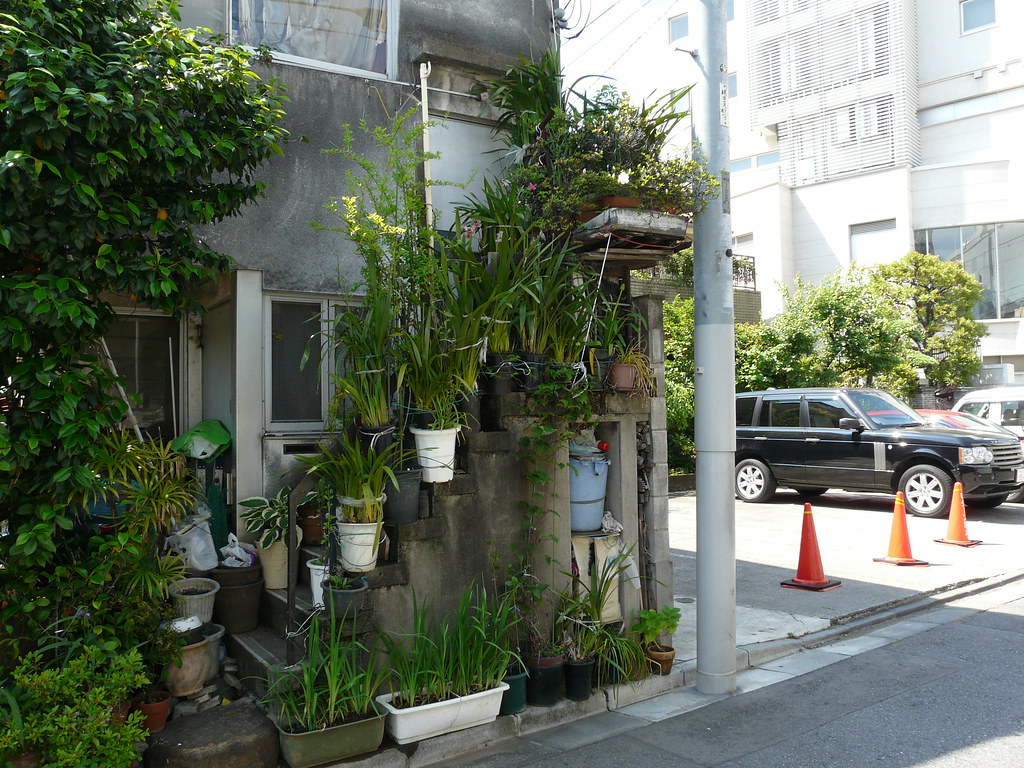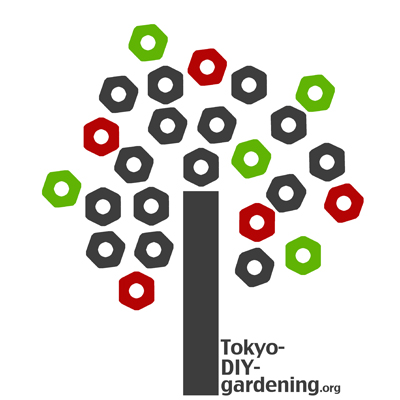This rambling garden along a strech of 4-lane residential road illustrates the blurred, conjunctive nature of Tokyo gardening (although this example is from Nagoya).
Pots, blocks, dirt and plants sit, stand on and burrow over and into each1 other in a rich semi-autonomous mess. Compare this to the modular, constrained and connected formal gardens and green spaces of the financial district.
1. from Shelton (1999)
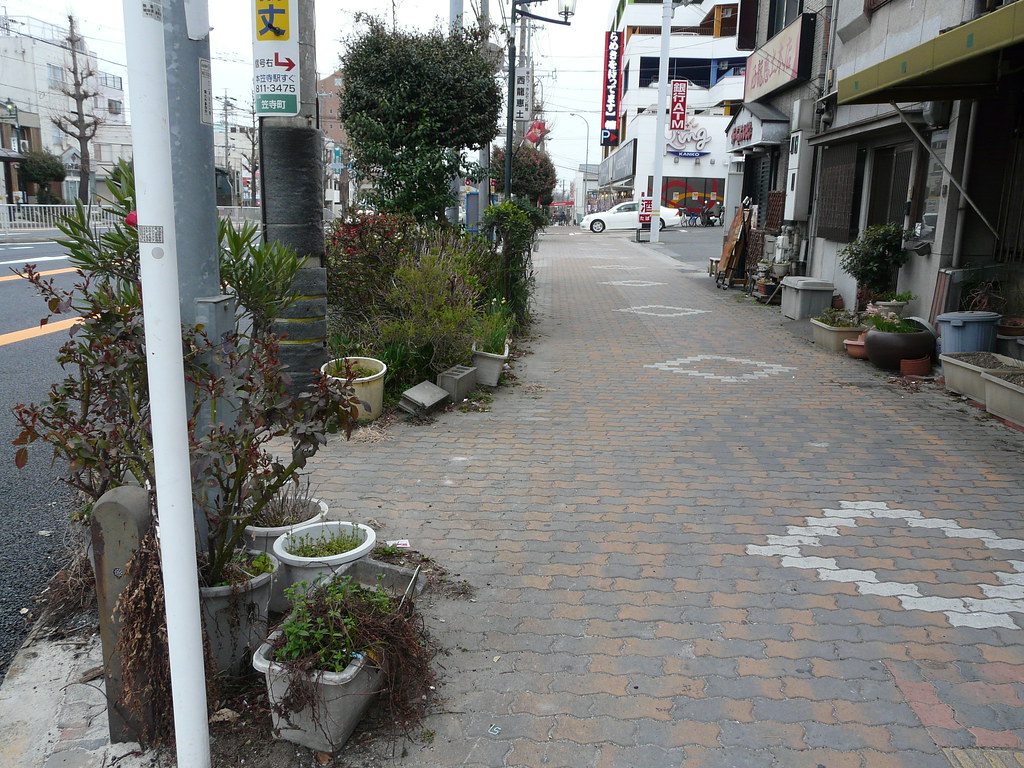
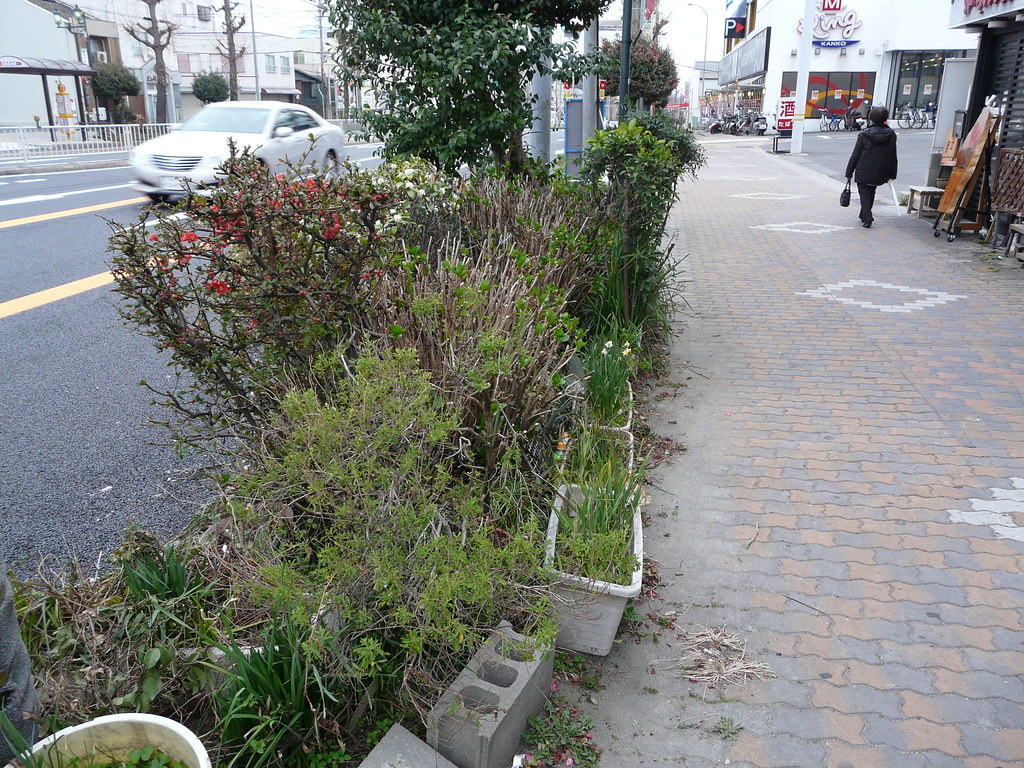
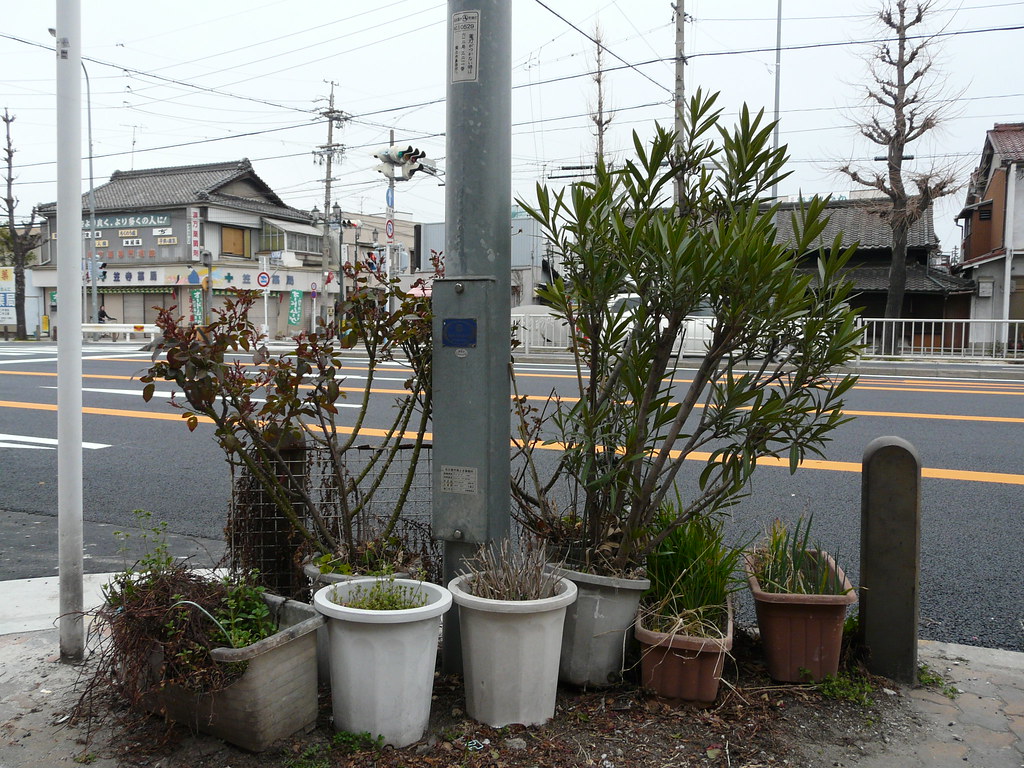
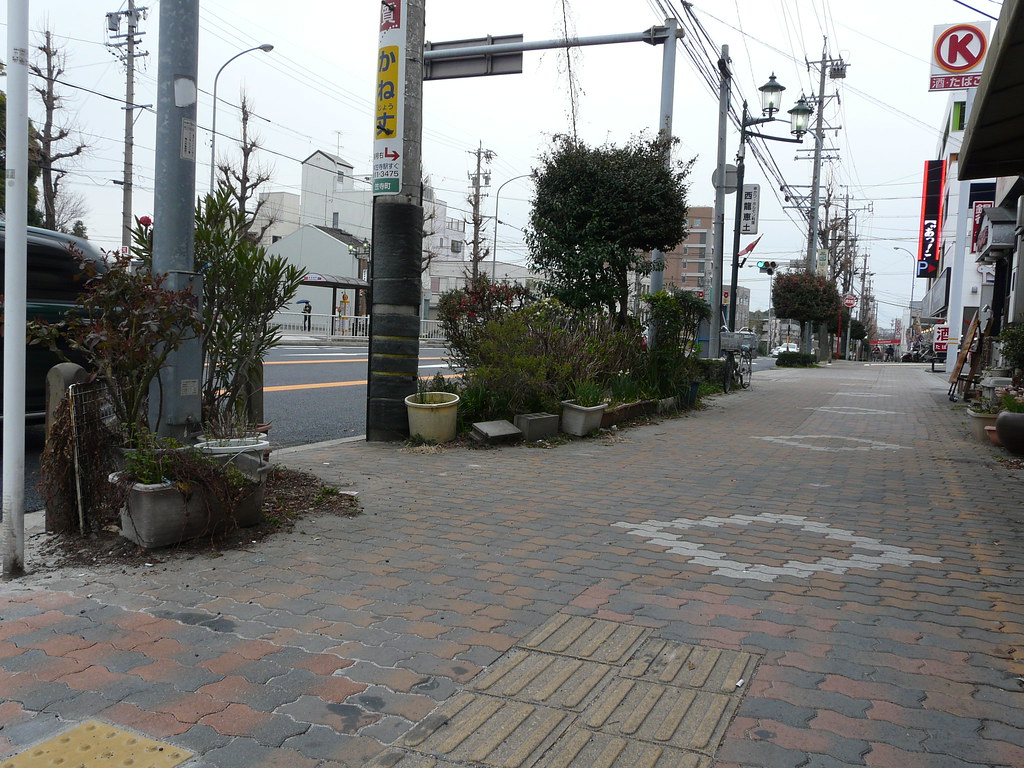
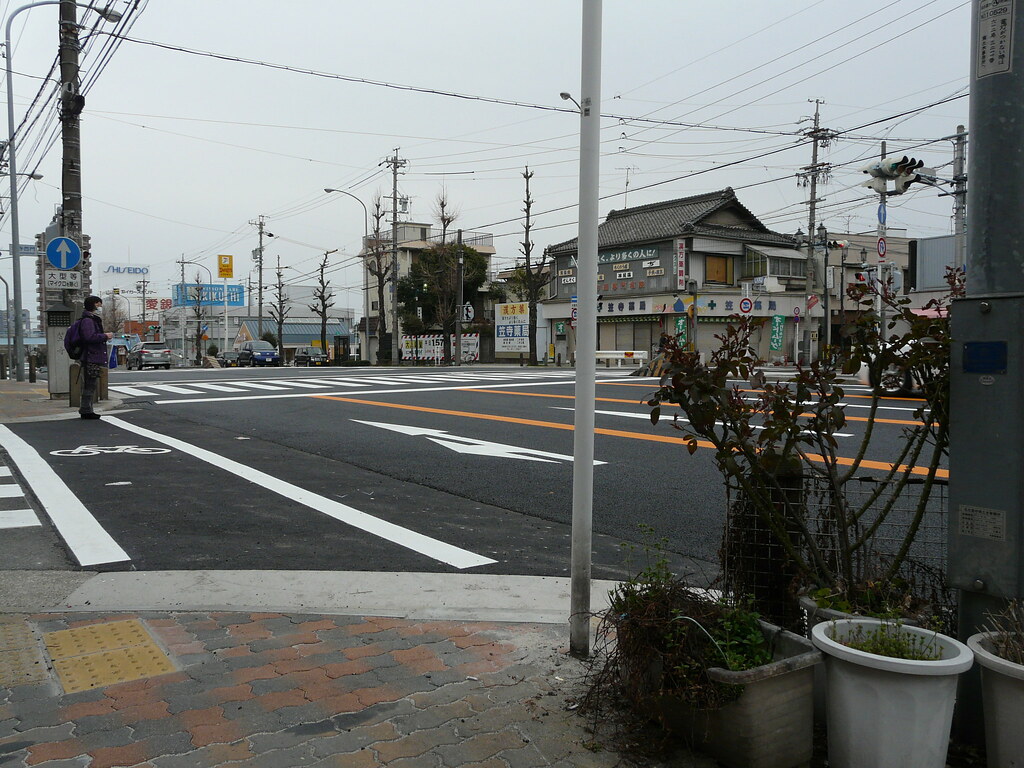
Materials: Pots
Location: Nagoya
Quiet gardens nestle up against apartment complex walls and fences, far from the controls of the centre – in planters and planted directly in the earth.
These side spaces, edges – passage territories – are just the right mix of light, elbow room and ‘half-hiddenness’ to act as invitations to garden.
(see The Open City by Richard Sennett (PDF link) for a discussion of passage territories)
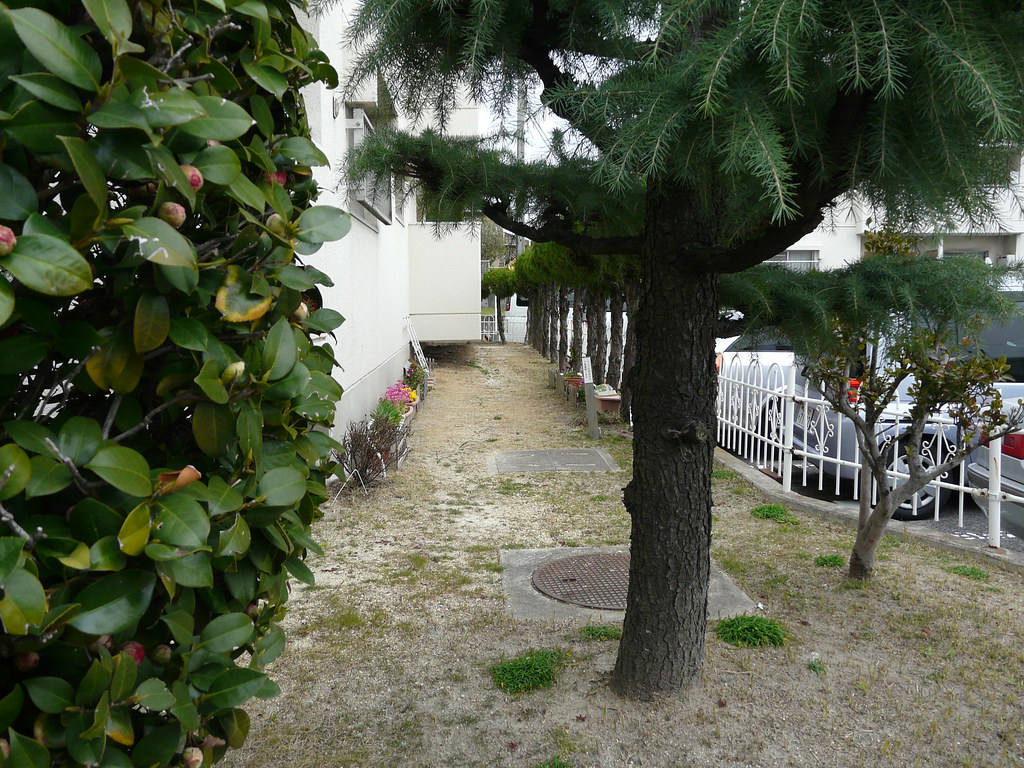
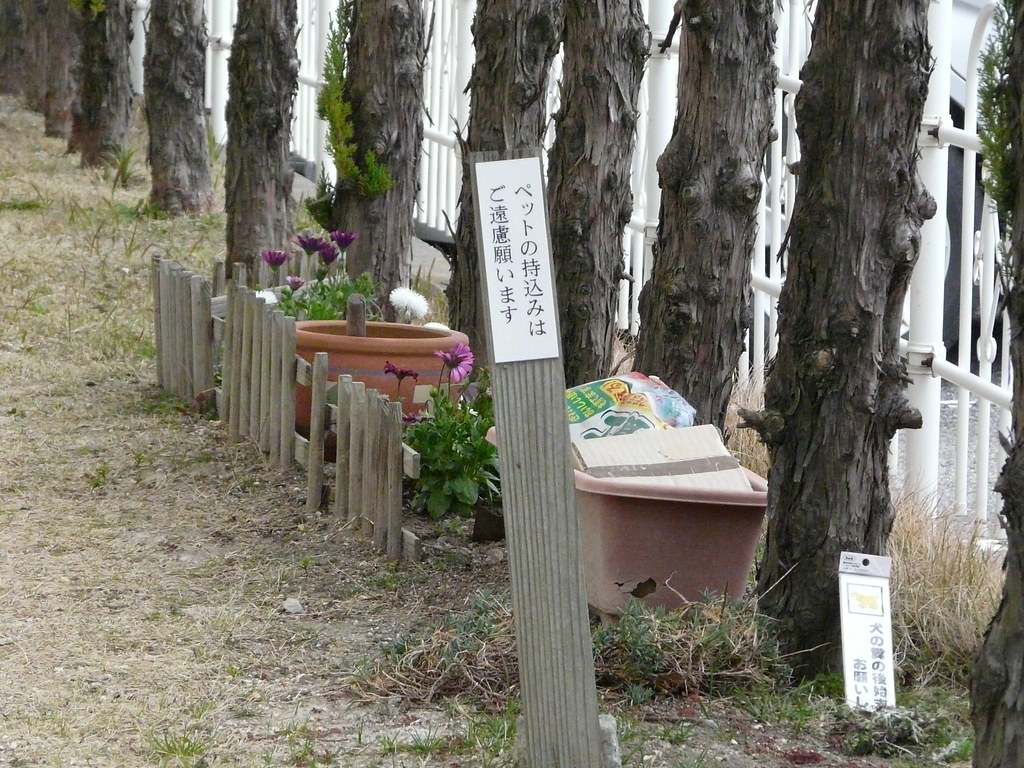
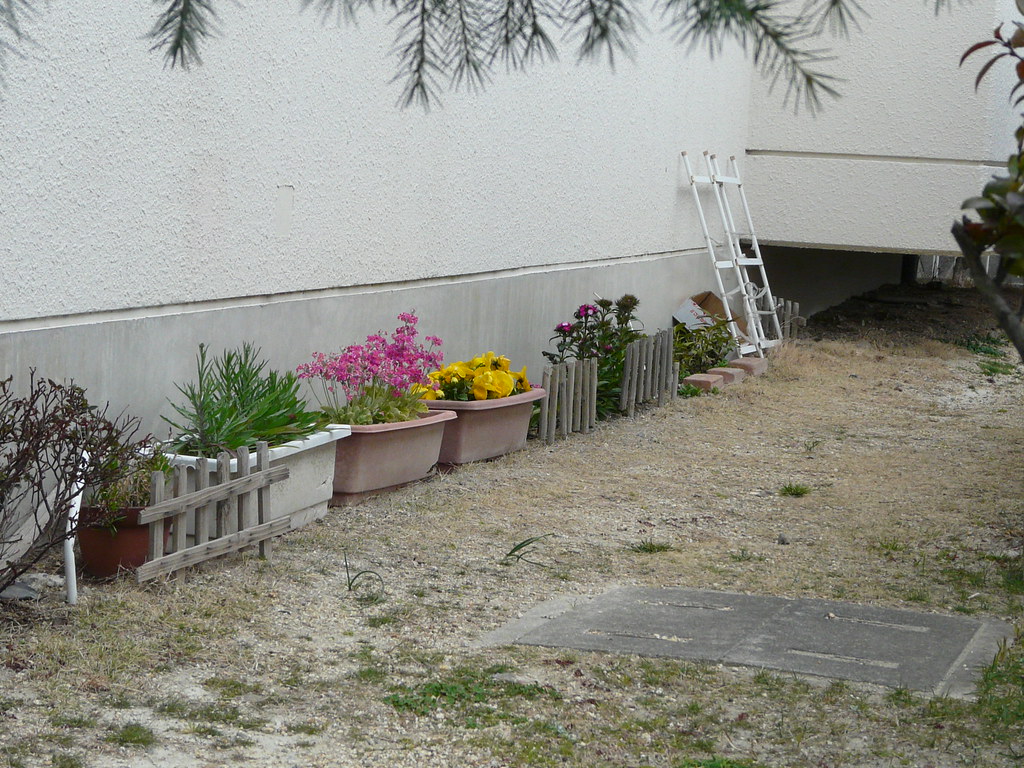
Materials: Pots
Location: Nagoya
A bit of greenification helps keep this inner-city commerce spot free of parked bicycles.
Nice contrast with residential areas, where pots trump cars – see [HERE] and [HERE]
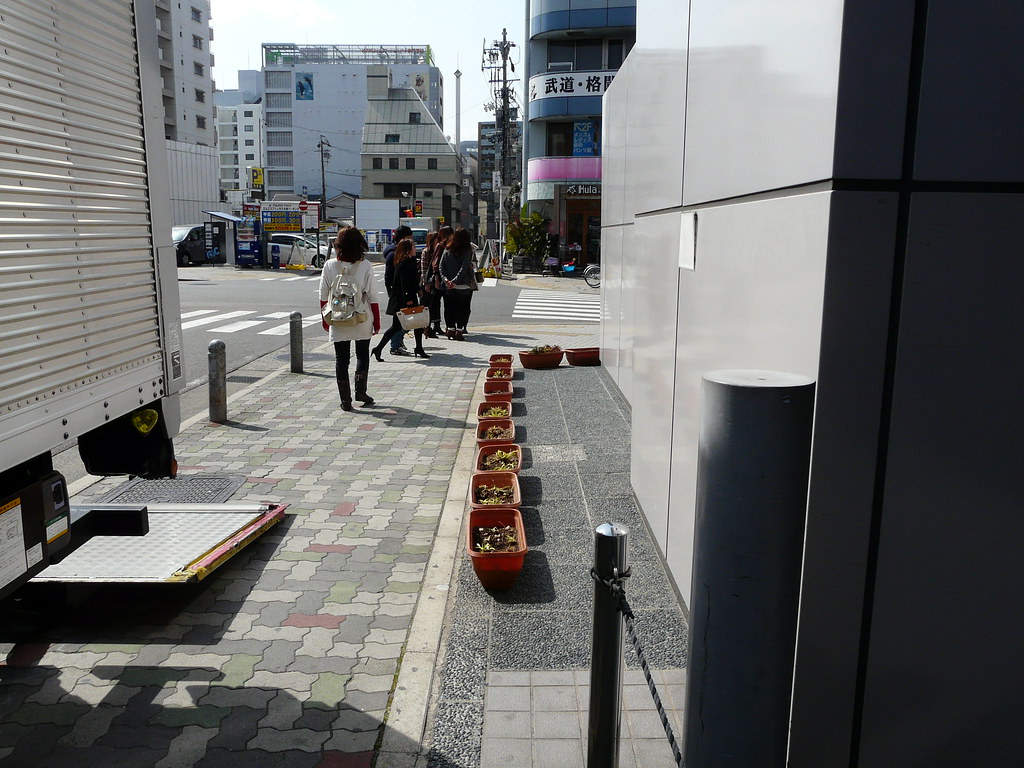
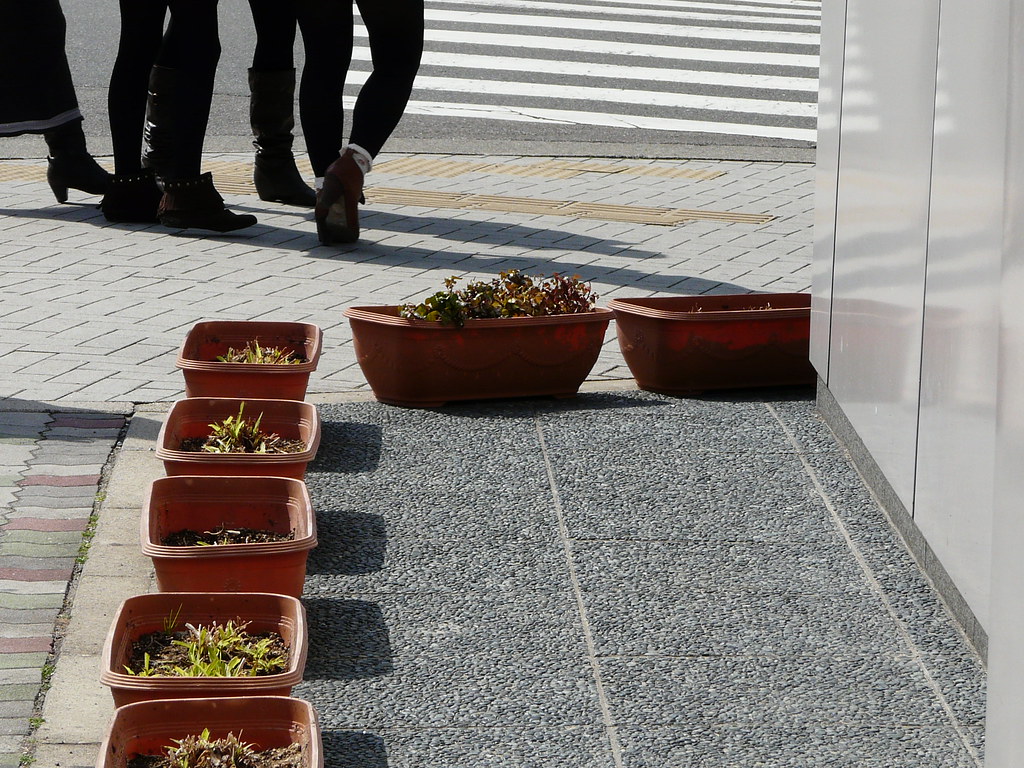
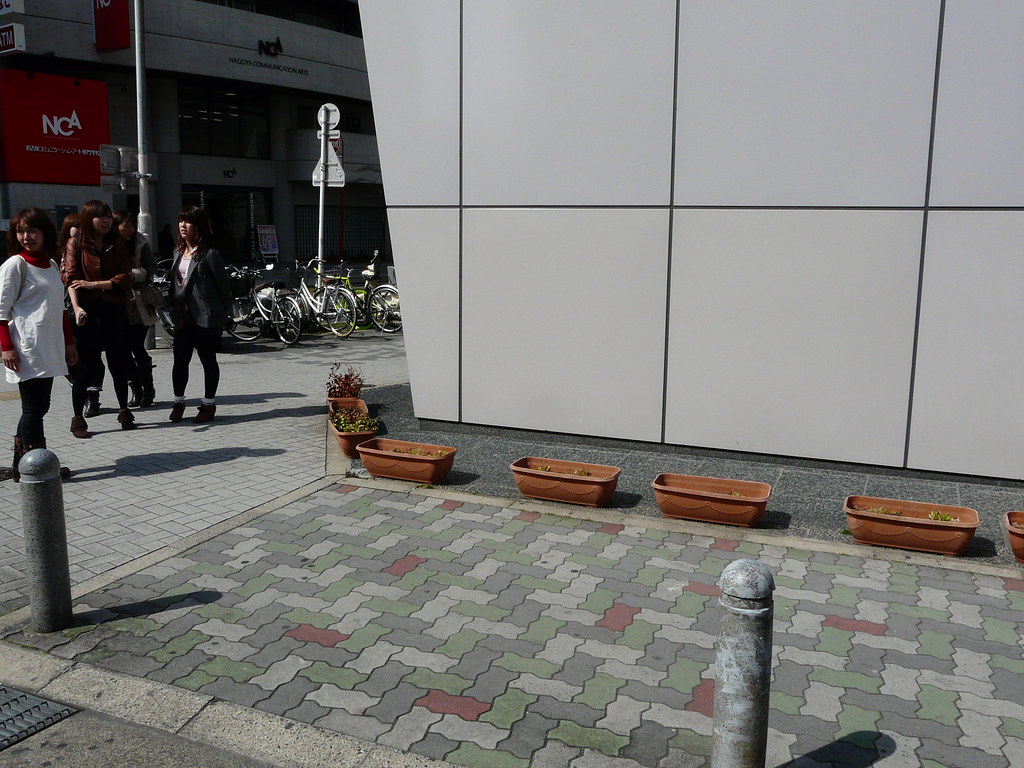
Materials: Potplants
Location: Central Nagoya
Pot plants outside a suburban residential office demarcate parking space, prevent cyclist curb-cutting (safety), set the limits of the official office zone of use, and beautify.
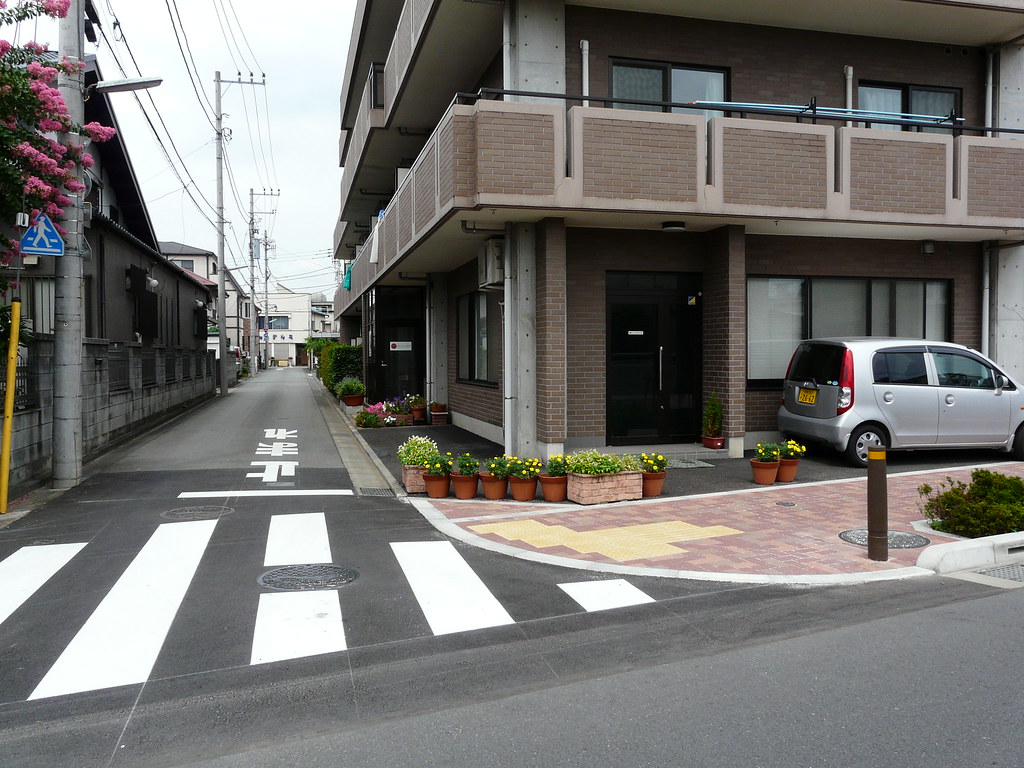
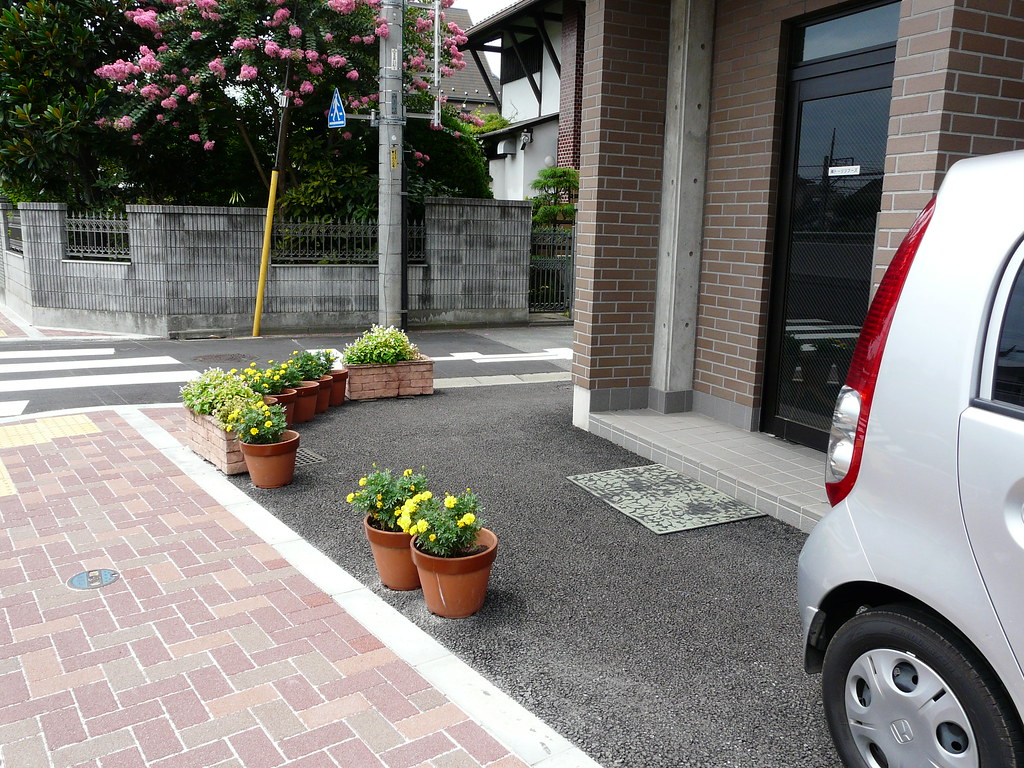
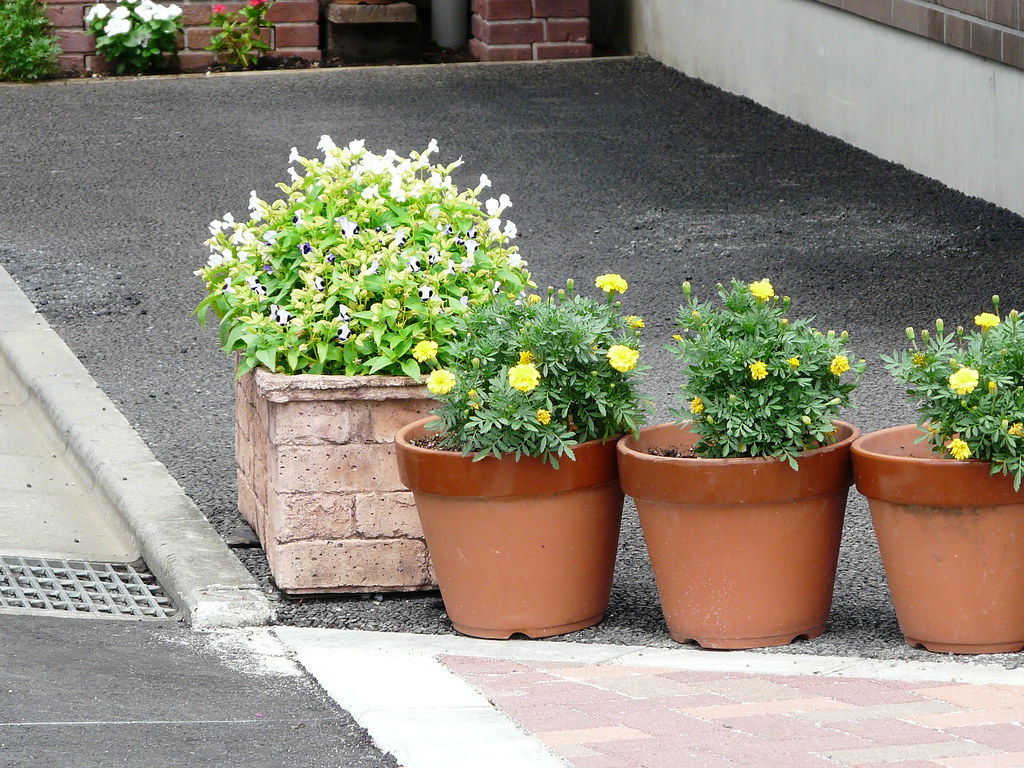
Materials: Pots
Location: Akishima, Tokyo
(Originally posted on Tokyo-DIY-Gardening)






